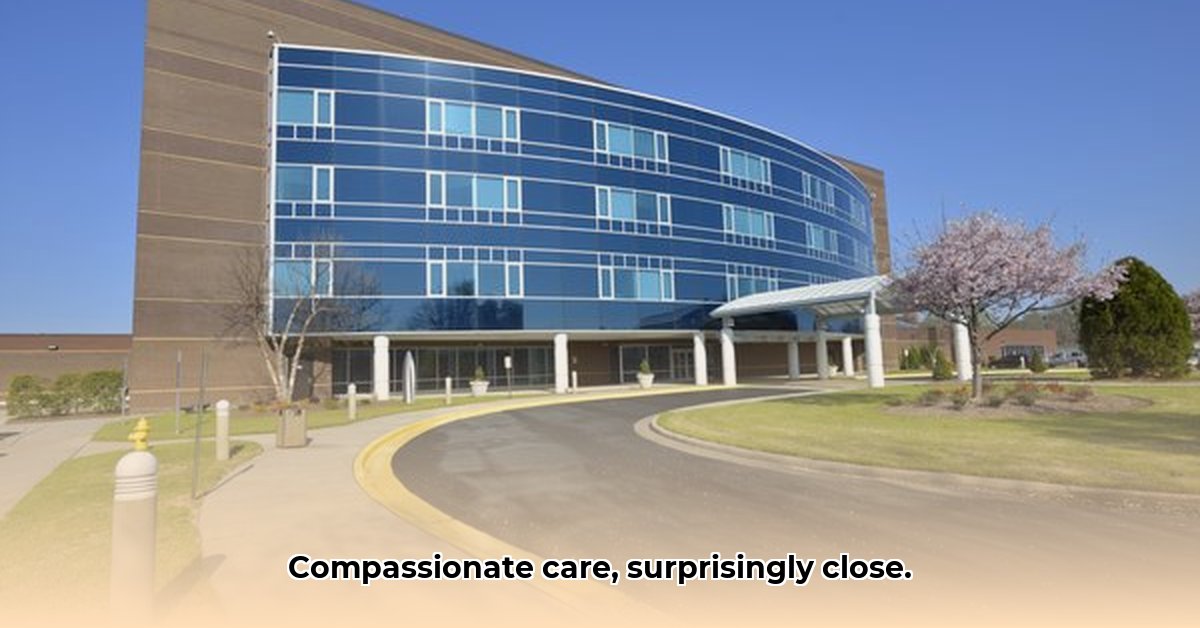
Understanding Betsy Johnson Hospital's Community Focus
Betsy Johnson Hospital (BJRH) in Dunn, North Carolina, is deeply embedded in its community. Many staff members are local residents, fostering a strong connection between caregivers and patients. This close-knit atmosphere contributes to a personalized and trusting healthcare experience. Imagine the comfort of receiving care from familiar faces – neighbors you see at the grocery store or local events. This personal touch can significantly ease anxieties during a challenging time. However, while this community connection is a significant strength, it's crucial to consider a broader perspective when assessing the hospital's overall performance. Data-driven insights are essential for a comprehensive evaluation. How can patients confidently choose BJRH without access to complete performance data? This lack of transparency necessitates improvement. For information on end-of-life care services in a neighboring community, see this helpful resource.
Assessing BJRH's Performance: A Need for More Data
BJRH's accreditation by The Joint Commission signifies adherence to high safety and quality standards. This is a significant achievement, demonstrating a commitment to best practices. But accreditation alone doesn't provide a complete picture of patient outcomes, wait times, or infection rates. These crucial metrics are necessary for informed decision-making. Wouldn't you want to know a car's safety rating and fuel efficiency before buying it? Similarly, patients deserve access to clear, readily-available information on patient satisfaction, success rates for various procedures, and average wait times. This transparency is crucial for building trust and empowering patients. The absence of such data raises concerns and limits informed choices. How can we ensure BJRH maintains its excellent standard without a clearer picture of its performance? The hospital's commitment to transparency needs to expand.
Key Takeaways from the Review of Betsy Johnson Hospital:
- BJRH's community focus fosters a strong patient-caregiver connection, enhancing the personal experience.
- The Joint Commission accreditation demonstrates a commitment to safety and quality, yet comprehensive performance data is lacking.
- Increased transparency about key performance indicators is crucial for building trust and enabling informed patient choices.
Improving BJRH: A Path Forward Through Strategic Growth
To enhance its services and solidify its position within the community, BJRH must prioritize several key areas:
Enhance Transparency: Publicly releasing comprehensive data on patient outcomes, wait times, and infection rates is essential. This will foster transparency and accountability.
Modernize the Website: An improved website with easily accessible information about services, staff profiles, and online appointment scheduling is imperative for enhancing patient experience and attracting new patients.
Develop a Strategic Plan: A long-term strategy addressing community healthcare needs, technological advancements (like telehealth), and competitive positioning is vital for sustainable growth.
Address Staffing Challenges: Implementing a robust recruitment and retention strategy, paired with competitive compensation packages, is crucial for maintaining high-quality care, given industry-wide staffing challenges.
How to Compare Betsy Johnson Hospital to Other Hospitals
Direct comparison of BJRH with other North Carolina hospitals is currently hampered by the limited availability of publicly accessible performance data. While the Joint Commission accreditation assures adherence to quality standards, it doesn't fully encapsulate patient experience or outcomes. To compare hospitals effectively, explore diverse resources:
- Online Reviews: Sites such as Healthgrades or Google Reviews offer patient perspectives, although individual experiences may vary greatly.
- State Health Department Data: Check if the North Carolina state health department publishes comparative hospital performance reports.
- Direct Contact: Contact BJRH directly to inquire about specific performance metrics.
Beyond numerical data, factors like location, accessibility, specialized services, and personal recommendations play a vital role in the decision-making process.
Mitigating Potential Risks at BJRH
While BJRH possesses numerous strengths, proactive risk mitigation is essential for sustained success:
| Risk Factor | Likelihood | Impact | Mitigation Strategy |
|---|---|---|---|
| Negative Patient Reviews/Feedback | Medium | Medium | Proactively solicit and address feedback; implement improved communication and complaint resolution processes. |
| Staffing Shortages | High | High | Offer competitive compensation and benefits; invest in robust recruitment and retention programs. |
| Cybersecurity Breaches | Low | Very High | Implement and regularly update strict security protocols; conduct frequent security audits and training. |
| Regulatory Non-Compliance | Low | Very High | Maintain ongoing compliance monitoring, establish a robust compliance program, and address issues quickly. |
By addressing these challenges and embracing continuous improvement, BJRH can enhance its commitment to providing compassionate, high-quality care to the Dunn community and beyond.